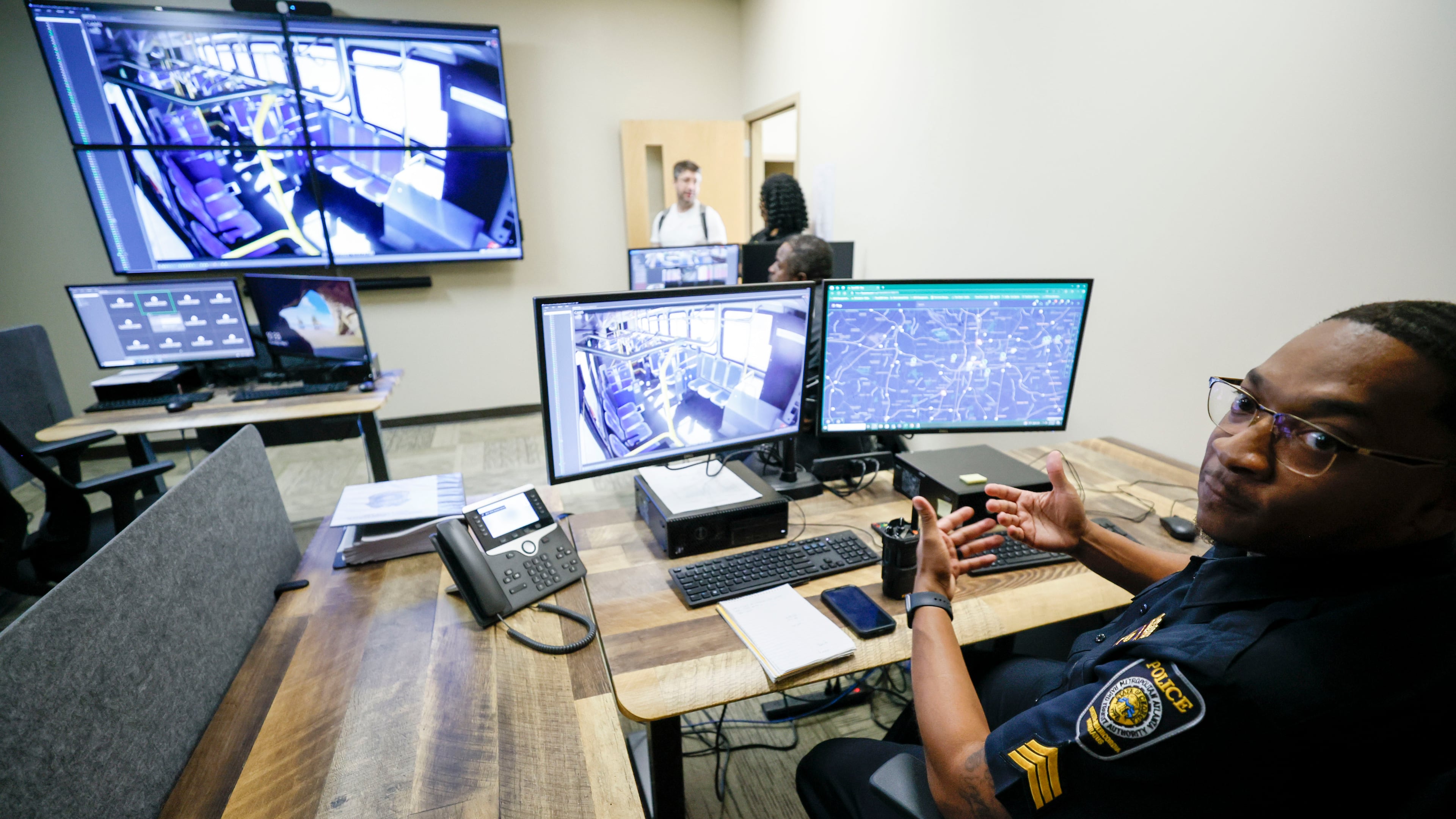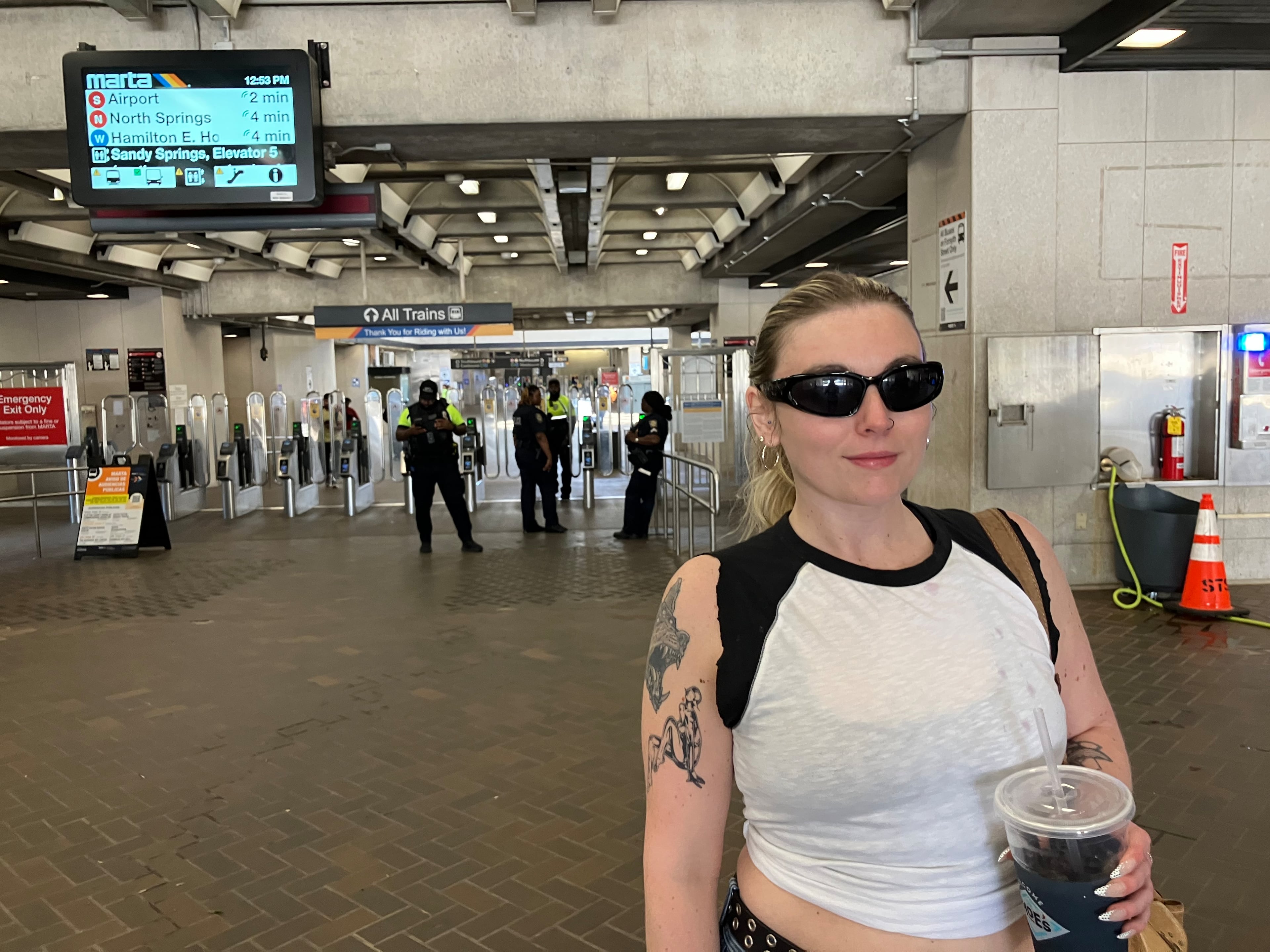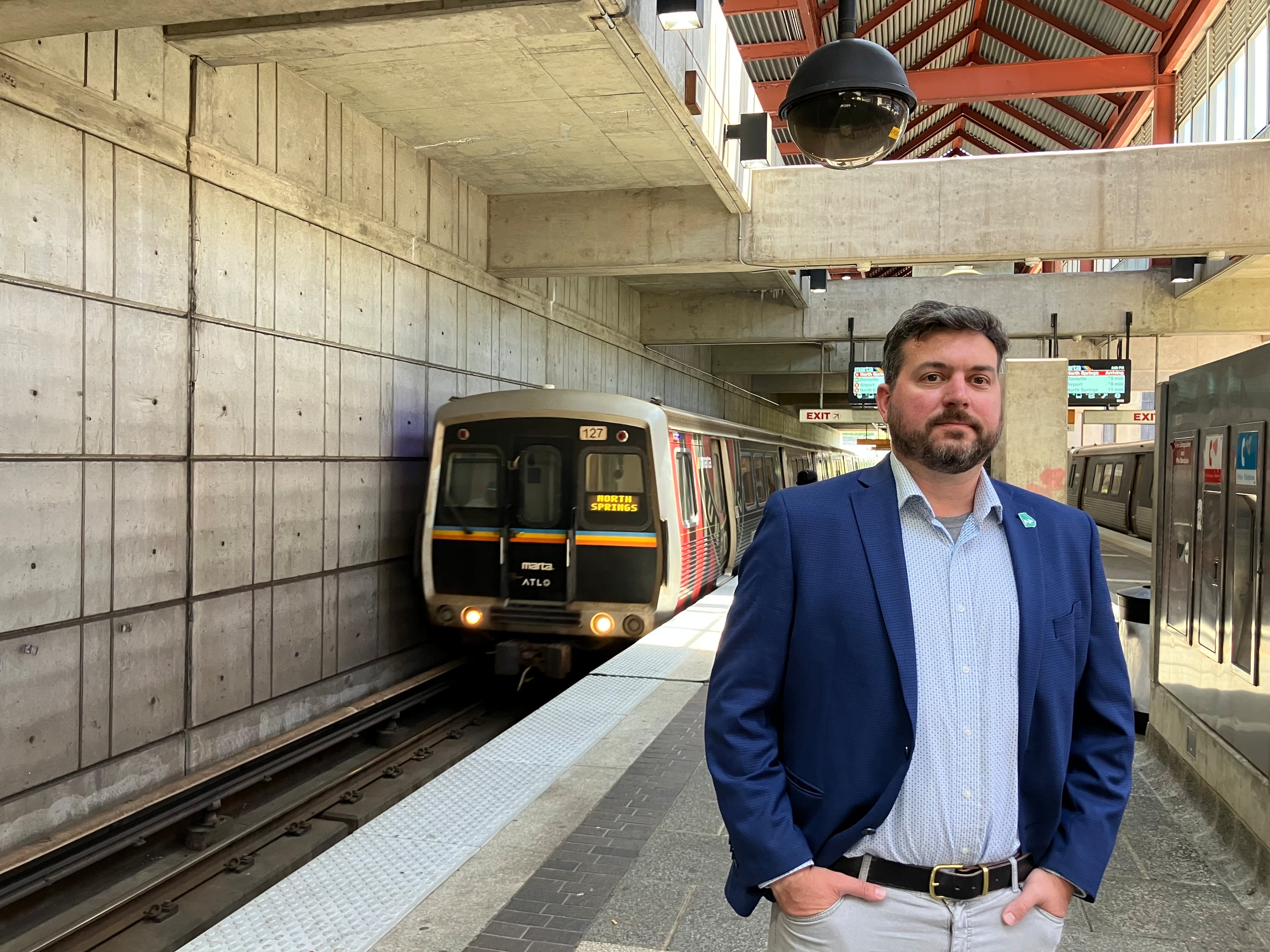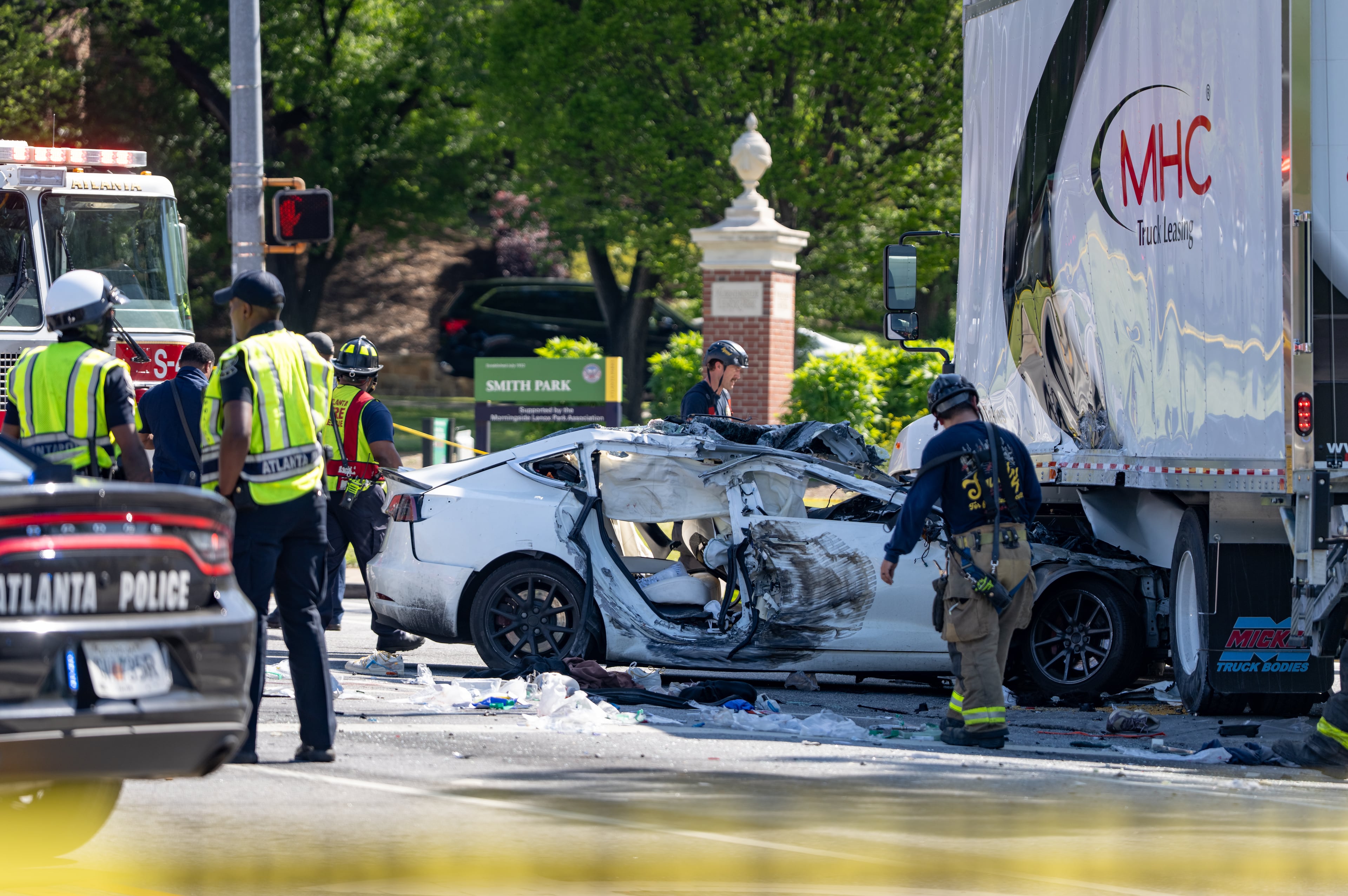MARTA boss: Safety is a ‘north star’ focus as transit agency tries to attract more riders

Just days before passengers dove to the ground to take cover from shots fired on a Gold Line train, MARTA leaders were stressing the importance of safety as a way to grow the transit system’s flagging ridership.
It’s no mystery what attracts riders, MARTA General Manager and CEO Collie Greenwood said: “It means getting the basics right.”
For MARTA, the stakes are high. Ridership has been uneven since it plummeted during the coronavirus pandemic and the transit agency is projecting budget deficits as soon as 2026, the same year the World Cup will test MARTA by bringing huge crowds to Atlanta.
Safety is part of a trifecta of factors Greenwood says is key to attracting riders, alongside cleanliness and reliability. Those three features make up the agency’s new “north star” focus around which MARTA is orienting itself.
But incidents like the May 18 shooting on a train near the East Point station showcase the challenge. While violent crimes on MARTA are infrequent and falling so far this year, their occurrences shake the public’s confidence like nothing else.
As MARTA Police Chief Scott Kreher said recently, when it comes to safety, there‘s reality and then there‘s perception.
The reality: The chief says MARTA is safe — and getting safer. In the first three months of 2025, serious crimes were down 35% compared to a year ago.
The perception: The Atlanta Journal Constitution spent two days talking with a dozen riders at five MARTA stations this week. Several said they feel safe in general but are uncomfortable when other people occasionally are loud, drunk or otherwise unruly on buses and trains.
Other riders said they feel unsafe because people carry weapons on trains, which is legal in Georgia, and suggested bolstering the presence of patrol officers. Still, others said the opposite — more police would make them feel less safe.
Bria Moon, 27, who lives near the Lindbergh Center station and works as a film costume designer, said she rides MARTA daily and feels safe doing so.
“A lot of people think that MARTA isn’t safe because they never ride MARTA,” she said Wednesday at the Five Points station.

Kreher has said his department has taken a more “hands-on” approach in recent months, making more arrests and issuing more suspensions even as calls for service have stayed relatively steady.
He credits that strategy with the drop in violent crime, which has come even as the MARTA police department has shrunk and continues to deal with vacancies.
Approximately 16% of officer positions are currently unfilled.
Kreher is hopeful he can attract officers back to the department with the 15% raise that is in next year’s proposed budget, but he‘s also said officers on the ground are only one part of how MARTA keeps riders safe.
‘Right people in the right places’
From a windowless room at MARTA’s Chamblee station, MARTA police can pull up the view from any one of thousands of CCTV cameras across the system.
Four large television screens hang from the front of the room with feeds from train platforms, station entrances and exits, buses, parking lots and officers’ body-worn cameras. With the click of a button, any camera can be pulled up on the big screens or on the double monitors at each officer’s desk.
During service hours, at least one officer is always watching from the newly formed Real Time Crime Center, which MARTA established earlier this year.
Before the crime center was established, the criminal investigation unit regularly reviewed footage to help solve crimes. But no one was consistently monitoring footage live, MARTA police Sgt. Demetrius Garmon said.
The real-time monitoring puts eyes on more places than officers can be at any given point, Garmon said.
“If something happens, best believe we are going to get it on camera,” he said.
When a call for service comes in, the crime center officers can pull up cameras and let officers know what to expect at the scene. The cameras can also help police flag situations that might escalate into violence.
Garmon said he pays close attention any time he sees a large group congregating.
In situations like that, “something is either going on or is about to happen,” he said. It gives him time to alert nearby officers so they can intervene, if needed.
MARTA police have a train patrol that consists of on-duty and overtime officers who ride for visibility and crime reduction, Kreher said. There aren’t enough officers to ride every train, but officers are assigned to the hours, times and trains where the most incidents are reported.
There wasn’t an officer on the train during the recent shooting. The crime center helped track the shooter’s movements after he fled at the East Point station, Kreher said. He said it also helped police identify the suspect, who had not been arrested as of Thursday.
Since the shooting, MARTA has reassigned all SWAT, undercover and K9 officers to train patrol until further notice.
Kreher has said MARTA’s surveillance cameras are “vital.” They regularly help officers make arrests, like after an assault at Peachtree Center station on April 1.
The suspect in that case was arrested a day later, he said.
He has credited the cameras and the crime center with making the department more efficient at a critical time when its ranks have diminished. MARTA has a budget for 277 officers currently, down from 314 five years ago. Only 231 positions are currently filled.
“With technology and with using data, and not just feelings, we‘re putting the right people in the right places,” Kreher said. “We‘re able to combat the crime with less people.”
Still, he said, “to be safe, we still need additional resources in that realm.”
Bus drivers ask for increased protections
Onboard shootings like the one on May 18 are infrequent.
Before the shooting near the East Point station, the last time someone was shot on a MARTA train was just over a year ago, according to police reports provided by the agency this week in response to a public records request.
Jah-Malik Marcano, 23, was fatally shot in May 2024 while riding an eastbound MARTA train between H.E. Holmes and the Georgia World Congress Center/CNN Center stations.
The last time someone was shot on board a bus was in early January, records show. A bystander was hit after two passengers got into a shootout on a MARTA bus in Clayton County, authorities said at the time. Both the bystander and one of the shooters were shot in the leg.
The January bus shooting happened just days after a MARTA bus driver, Leroy Ramos, was shot and killed during a fare dispute at the Decatur station.

In the weeks after his death, employees asked MARTA to increase protection for drivers and said the situations they’re asked to deal with aren’t reasonable. Drivers said they’ve had riders masturbate on them, spit on them and hit them with a gun, on top of frequent verbal assaults.
An increase in robberies, aggravated assaults and larcenies contributed to an overall 15% uptick in serious crimes last year compared to 2023, according to MARTA crime statistics.
The biggest year-over-year increase in crimes happened on buses.
So far in 2025, crimes are trending down, with 35% fewer incidents in the first three months of the year compared to the same time in 2024. The biggest drop was in reports of aggravated assaults, which fell 56%.
MARTA says they are gearing up to ensure safety at next year’s World Cup games that will be played in Atlanta. Police Maj. Chablis Salters said in terms of scale, the only comparable event MARTA has staffed is the Super Bowl.
The World Cup will be that, eight times over, she said.
Preparations are already underway, Kreher said.
Vacation and scheduled off days have been canceled to ensure full staffing. The department is also adding additional cameras throughout the system, and MARTA has contracted with an outside company to ensure full-time EMTs at the busiest stations to assist with any medical emergencies.
Kreher said MARTA will be requesting additional transit police officers from other systems.

Nonviolent incidents help shape views
In interviews, riders described many nonviolent incidents that helped shape their views of safety aboard public transportation.
Qiana Wise, 42, lives in Hampton and takes MARTA a few times each month to her job as an administrative assistant for cancer research at Emory University. Her commute involves taking three buses and two trains each way to the Decatur station and back home.
In an interview at the East Point station on Wednesday, Wise said she thinks taking MARTA is generally safe but will not take her 5-year-old daughter on MARTA again.
That’s because people were yelling and cursing on the train the one time she did take her, a few months ago on a trip to eat at Ponce City Market and walk the Beltline.
“She didn’t cry or anything,” Wise said. “She just snuggled up against me, just to feel safe, because she wasn’t used to it. I think the panhandling on the train is my main issue.”
Cindy Johnson-Wooten, who took the train Wednesday to get to an appointment, said she’s concerned about people carrying guns and says more patrol officers are needed.
“I feel they need metal detectors like they’ve got in schools because there‘s too many people coming through here,” Johnson-Wooten said.
“Because they passed that law, everybody thinks it’s OK to carry a gun.”
In 2022, Gov. Brian Kemp signed a bill into law that allows Georgians to carry concealed handguns without first getting a license from the state.
Johnson-Wooten, who was accompanied by her 27-year-old daughter, Jourdin, added that MARTA does a good job overall.
Even so, Jourdin Johnson-Wooten said that about a month ago, a man followed her from Five Points to the West End station and then onto the same bus she was riding home.
Finally, she felt so unsafe that she complained to the driver, who yelled at the man to stop following her. She said the man got off the bus before her stop but stared her down from outside.

Benjamin Andrews, a Brookhaven resident who has been riding MARTA for about 15 years and was in the East Point station on Wednesday, said he’s never had a problem but added that he also is 6-foot-2 and weighs more than 200 pounds.
Andrews said it will be better when new trains go into service starting early next year because they will be one continuous train instead of having individual cars. That will allow people to easily move away from riders who make them uncomfortable, he said.

Patricia Lester lives in a senior home off Campbellton Road in southwest Atlanta and rides MARTA every day. She said there usually aren’t problems on the trains except when riders are drinking or using drugs.
“I feel it’s as safe as we make it,” Lester said. “If we decide to do things that will make MARTA unsafe, it will be unsafe.”
Staff writer Taylor Croft contributed to this report.
Correction: This story has been corrected to note the last reported incidence of a shooting onboard a MARTA train was May 2024.



